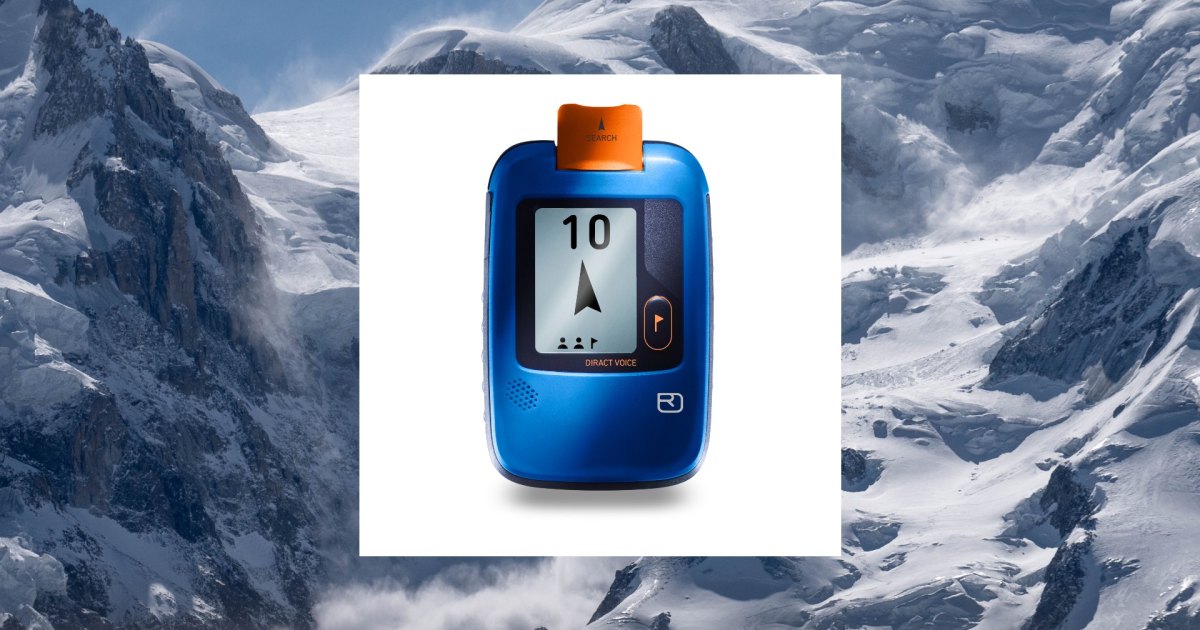No products in the cart.
Fitness Tips
Ortovox Diract Voice Avalanche Transceiver Is a Mountaineering Must
Backcountry skiing. Snowshoeing. Snowmobiling. Mountaineering. These winter sports—aside from filling your stoke-hungry heart with pure, unadulterated joy—have something in common: a risk of avalanche. Here are some sobering stats if one of your buddies gets buried. If they don’t perish immediately from an avalanche, you have roughly 18 minutes to save them. If you manage to clear their airway in that time, the survival rate is 90 percent. If they’re buried longer, their chances of surviving drops to 40 percent. Thankfully a new avy beacon, the Ortovox Diract Voice Avalanche Transceiver, can improve those odds.
Ortovox Diract Voice makes finding an avalanche victim faster by offering voice-guided instructions through the search process. Flip the beacon from “send” to “search” mode, and it talks you through the search, with commands like: “Go to the snow surface,” “Turn around,” and “Run straight.”
Ortovox’s goal with Diract Voice was to make the best recuse device by focusing on intuitive use. Its research showed that voice commands are the most direct link to the brain, and hearing a command like “run straight” can calm adrenaline and anxiety, and aid in decision-making, particularly in high-stress situations.
Other avalanche beacons display arrows on the screen, and they beep to let you know you’re getting closer to the buried transceiver you’re searching for. Diract Voice lets you keep your eyes on the snow, which makes it easier to navigate avalanche debris, and gives you a better chance of spotting a clue like a hat or a glove that could speed the rescue.
Voice guidance is the beacon’s most unique feature, but it’s not the only. Three smart antennae auto-detect the angle of the buried beacon, automatically transmitting to the optimum antennae to hasten the rescue.
The beacon uses a rechargeable lithium polymer battery. It can’t leak like disposable batteries do, and it’s got excellent cold-weather life. A Recco transmitter in the beacon harness further aids rescuers in locating people wearing the Diract Voice beacon, so it should always be donned in its harness—not stashed in a pants pocket.
Every company measures its beacon range slightly differently. Ortovox calculates the average avalanche at approximately 80×100 meters. Diract Voice has a search strip width of 50m. In an average sized avalanche, that means a searcher using Diract Voice can search the debris field in a single pass.
One universal issue with transceivers is that toward the edges of their range, they can become unstable, send a searcher off in the wrong direction, or the signal can disappear. With Diract Voice, Ortovox focused on building a transceiver that’s predictable—with the smallest possible instability corridor, instead of striving for a beacon with the biggest range. The company’s perspective is that a massive range doesn’t make a rescue faster, but a stable display and supported decision-making does.
It’s also a transceiver that’s simple-looking and intuitive to use. A single button tags up to four burials. It also switches the beacon to standby mode. And, in the case of a secondary slide, it automatically switches from search or standby to transmit. It includes group check and permanent self-testing, and it’s easy to see if the beacon is in send or search: A lever flips up to switch modes. That lever also covers the on/off switch to prevent the beacon from accidentally being turned off.
Diract Voice takes two to three hours to charge, lasts for a minimum of 250 hours in transmit at 50° F, and for 50 hours in search.
[$380; rei.com]
For access to exclusive gear videos, celebrity interviews, and more, subscribe on YouTube!
Source link

